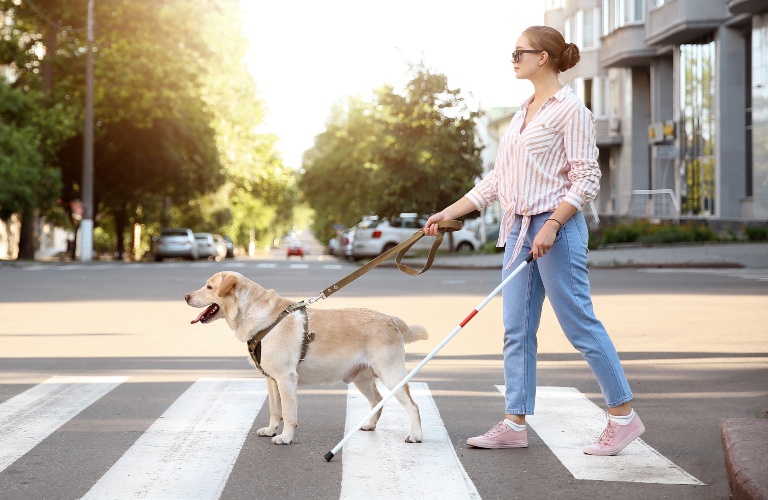
Social Security Disability Insurance or SSDI is a complicated Social Security program. For the most part, if you are considered disabled, all people are treated equally by the program based on their individual work history. However, there is a difference in SSDI for blind people. Tabak Law will not only cover that difference, but we will also explore the definition of being legally blind as well.
Key Difference for Blind People on SSDI: SGA
For the most part, SSDI is the same for those who are blind as those with other disabilities. Of course, your qualifying symptoms will change, but that changes from disability to disability anyway. One thing that is different specifically for blind people is SGA.
SGA stands for Substantial Gainful Activity. This is essentially a limit on the amount of money that you can earn per month before the Social Security Administration or SSA begins counting it as work. This could count towards a trial work period, which everyone is allowed to do with unlimited income, but once the 9 months of that trial work period is up, if you are making more than your SGA per month, you will likely lose your SSDI benefits.
For blind people, the SGA limit is substantially higher. These numbers change every year, and as of right now, we are on the cusp of a Cost of Living Adjustment. Regardless, the 2023 SGA limit is set at $1,470, but for blind people, that number jumps up to $2,460. Just remember that working close to the SGA limit can generally still put you at risk of losing your benefits.
Can You Get SSDI for Diabetes?
What is the Definition of Legally Blind?

As with all things, the Social Security Administration or SSA has a strict and complete definition for what it means to be legally blind. There are basically two ways that you can be declared legally blind.
The first way is to have bad or blurry vision that results in 20/200 eyesight even with prescription lenses or glasses. These vision ratings are based on your eyesight at 20 feet. The first number is always 20, the second number is an indication of how much detail you can see at 20 feet. If you have 20/200 vision, then when you are standing 20 feet away from something, you see the same amount of detail as the average person would see when they were standing 200 feet away. The larger the second number, the worse your vision.
The second way is if your visual field has been reduced to 20 degrees or less. This condition is also known as tunnel vision or peripheral vision loss, and it makes it hard or impossible to see things that aren’t directly in front of you. Some causes, such as glaucoma, can be treated or may be temporary.
As with any disability, these eyesight issues must have lasted or be expected to last at least 12 months. Other forms of blindness such as color blindness or night blindness do not qualify you for SSDI.
Read More: Do You Have to Have a Permanent Disability to Get SSDI?
Do You Have to Have Eyesight Issues in Both Eyes to Receive SSDI?
Yes, for both of these determinations, the SSA only considers your eyesight in the better eye. If you can’t get better than 20/200 vision in your left eye even with treatment or prescription lenses/glasses, but your right eye has 20/40 vision, then you are not legally blind.
What Other Benefits Come With SSDI?
Get Legal Help Getting Your SSDI Blindness Benefits
If you think you meet the criteria for being legally blind and your condition is expected to last for 12 months or more from its onset date, don’t let a denial letter get you down. Reach out to Tabak Law for a free case review today. It’s Tabak for the Payback. We don’t get paid, unless you get benefits.
Nothing posted on this website is intended, nor should be construed, as legal advice. Blog postings and site content are available for general education purposes only.
